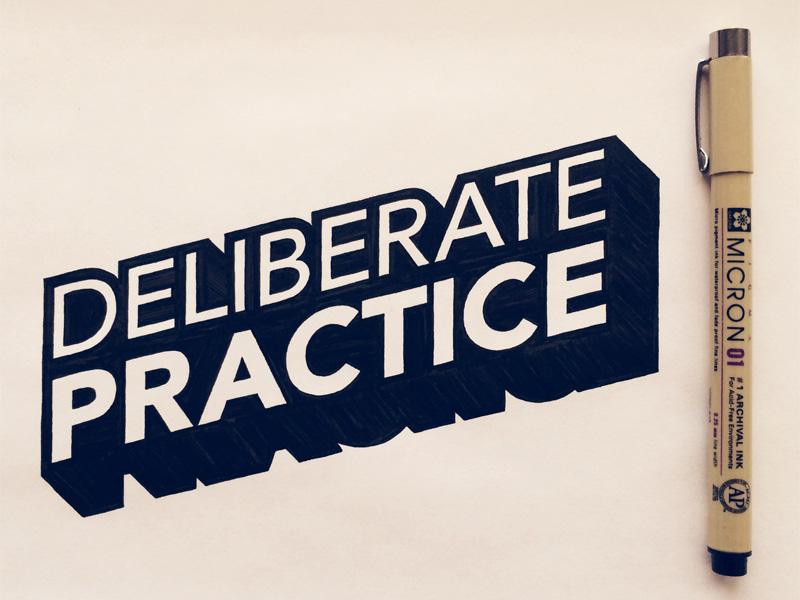SECTION 1 - The Research Athlete Mindset: Why Most Candidates Practice Wrong
Most ML candidates believe their performance will improve if they simply do more. More mock interviews. More system design problems. More LeetCode. More reading. More YouTube videos. More notes. More frameworks. More repetition.
But research athletes think in the opposite direction.
They don’t ask, “How much can I cram?”
They ask, “What is the most impactful thing I can train today?”
This shift in mindset is what separates average candidates from elite ones. Instead of optimizing for volume, they optimize for leverage, the smallest actions that produce the largest cognitive gains.
Why Most ML Interview Prep Fails
The average ML candidate prepares like this:
- Watch tutorials
- Re-read ML concepts
- Memorize definitions
- Practice a few case studies
- Do random mock interviews
- Hope repetition builds skill
But interviews aren’t exams.
Interviews are performance environments.
Performance requires building:
- frameworks
- reasoning patterns
- habits
- instincts
- composure
- cognitive endurance
None of these emerge from unstructured practice.
This is why two candidates with identical knowledge can have drastically different interview outcomes. One treats practice like content consumption. The other treats practice like neurological training.
The difference shows instantly in an interview setting.
The Research Athlete Analogy
A research athlete combines:
- the curiosity of a scientist
- the discipline of a competitive athlete
- the reflective habits of a chess master
- the creativity of a designer
- the adaptability of a systems engineer
They don’t train by accident; they train by intention.
They analyze every mistake.
They break down every decision.
They train weaknesses deliberately.
They perform under constraints on purpose.
They stretch themselves cognitively.
They track improvement as data.
This is what makes them calm and confident in interviews. Their preparation wasn’t random, it was designed.
It’s the same structure that elite ML interviewers look for, described deeply in:
➡️How to Think Aloud in ML Interviews: The Secret to Impressing Every Interviewer
Research athletes aren’t smarter, they’re more systematic.
The Cognitive Gap Between “Studying” and “Training”
Studying asks:
“How much information can I absorb?”
Training asks:
“How consistently can I execute under pressure?”
The difference is profound.
When you study, you are passive.
When you train, you are active.
When you study, you recall content.
When you train, you shape cognition.
When you study, you read ideas.
When you train, you perform ideas.
ML interviews require performance, the ability to:
- think clearly
- articulate structure
- embrace uncertainty
- reason through constraints
- justify tradeoffs
- adapt without panic
None of this improves through passive reviewing.
This is why highly educated candidates, even PhDs, often struggle. They studied deeply but never learned to perform the thinking publicly.
The research athlete mindset solves this.
Research Athletes Embrace Discomfort
Most people practice the things they’re already good at.
Research athletes practice the things they avoid.
If they fear system design, they spend hours breaking down ambiguous problems.
If they freeze under pressure, they practice timed drills.
If they ramble, they train structured communication.
If they rely too much on patterns, they practice unfamiliar edge cases.
If they get stuck easily, they practice reframing problems.
They don’t practice for comfort.
They practice for growth.
This is why their progress is exponential, not linear.
The Identity Shift That Changes Everything
To train like a research athlete, you must shift your identity:
From: “I’m studying ML interview topics.”
To: “I’m training to think like a high-level ML engineer.”
This identity shift transforms behavior:
- You seek feedback instead of avoiding it.
- You analyze failures instead of fearing them.
- You embrace hard problems instead of skipping them.
- You build cognitive skills, not just store ML facts.
- You understand interviews as cognitive tasks, not quizzes.
This identity, the identity of a research athlete, is the core of deliberate practice.
SECTION 2 - The Science of Deliberate Practice: How Elite Performers Build ML Interview Strength
Most candidates think improvement happens through exposure: do more problems, read more guides, watch more videos. But deliberate practice is built on a different foundation, the science of how skills form in the brain. It is grounded in cognitive psychology, neuroscience, and the training methods of elite performers.
What separates top ML candidates from the rest isn’t talent.
It’s the way they design their practice sessions.
They don’t rely on repetition.
They rely on precision.
They don’t chase comfort.
They chase tension.
They don’t hope for improvement.
They engineer improvement.
Deliberate practice is the method that allows your brain to encode the cognitive patterns needed to perform under interview pressure. And when practiced correctly, it can compress years of experience into months.
Let’s break down the underlying science and how it directly applies to ML interview performance.
a. Skills Grow at the Edge of Failure - Not at the Center of Comfort
This is the foundational rule of deliberate practice:
You improve fastest when you practice at the edge of your ability.
Not below it, where everything feels easy.
Not far above it, where everything feels overwhelming.
But exactly at the edge, where the problem forces you to stretch, but not break.
Weak candidates do the opposite:
- They repeat the types of ML questions they already know how to solve.
- They practice comfortable topics again and again.
- They stay in the center of their competence.
Research athletes deliberately choose problems that expose their weaknesses:
- Hard data ambiguity questions
- Unstructured ML system design cases
- Failure-mode reasoning
- Tradeoff conflicts
- Scenarios requiring domain adaptability
They practice where their brain struggles.
This controlled struggle is what generates learning.
b. Deliberate Practice Builds Neural Precision, Not General Knowledge
There’s a reason elite performer in any field do slow, controlled drills, pianists, chess players, sprinters, surgeons. They are training neural precision: the ability for the brain to fire the right cognitive patterns with incredible accuracy and efficiency.
ML interviewing requires neural precision too:
- framing problems clearly
- identifying constraints
- recognizing ambiguity
- engaging first principles
- generating structured options
- evaluating tradeoffs
- articulating reasoning cleanly
- adapting when the question shifts
These micro-skills become automatic only when trained deliberately, not casually.
This is why accidental practice never leads to mastery.
And why randomly doing ML system design questions doesn’t improve performance.
Deliberate practice targets specific cognitive operations, not generic exposure.
c. Feedback Is the Fuel - Without It, Practice Doesn’t Work
Many ML candidates practice for months without improving because they never receive meaningful feedback. They don’t know what they did well, what they did badly, or what to fix.
Feedback is the mirror that shows you your cognitive blind spots.
Without feedback:
- you repeat bad habits
- you reinforce shallow reasoning
- you overestimate your clarity
- you underestimate your gaps
- you assume you’re improving when you’re not
Research athletes aggressively seek feedback, sometimes more than they seek new problems.
They want to know:
- Am I framing correctly?
- Am I oversimplifying?
- Am I missing constraints?
- Am I reasoning from first principles or patterns?
- Am I getting lost in details?
- Am I clear and concise or rambling?
This is why deep ML interview refinement requires structured mock sessions, breakdowns, or coached reviews. It’s exactly why ML interview frameworks exist, like the ones described in:
➡️Mock Interview Framework: How to Practice Like You’re Already in the Room
Feedback turns practice into progress.
d. Deliberate Practice Reduces Cognitive Load Through Repetition of Structure
When you create structure, you reduce chaos.
When you reduce chaos, you reduce stress.
When you reduce stress, your brain performs better.
Deliberate practice trains you to instantly apply structure, like:
- “Let me break this down into components.”
- “Here are the key constraints.”
- “Let’s evaluate three possible directions.”
- “Given these tradeoffs, the best approach is…”
This structural repetition reprograms your brain so that, under pressure, it defaults to clarity instead of panic.
Weak candidates collapse into disorganized thinking when stressed.
Research athletes fall back onto trained patterns.
This is why they look calm.
Not because they feel calm, but because structure protects their mind from chaos.
e. Deliberate Practice Rewires Your Relationship With Failure
Most candidates avoid difficult problems because they fear feeling stupid.
Research athletes run toward them.
Why?
Because they understand the neurological truth:
the moment you fail and understand why you failed, your brain rewires itself.
Failure + analysis = adaptation.
This is why research athletes intentionally:
- choose problems that scare them
- analyze their breakdowns
- isolate the mistake
- drill the underlying skill
- measure improvement
Over time, failure becomes signal, not shame.
This mindset shift is the core psychological advantage that separates elite performers from anxious candidates. They don’t fear failure because they understand its function.
Failure isn’t a judgment.
Failure is the gym.
f. Deliberate Practice Makes Performance Feel “Slow and Clear,” Not “Fast and Panicked”
Weak candidates try to impress with speed.
Strong candidates impress with clarity.
Research athletes develop a cognitive pattern where:
- thinking slows
- clarity increases
- structure emerges
- calmness rises
- reasoning becomes effortless
This isn’t natural.
It’s trained.
When you train like a research athlete, your brain stops scrambling for answers and starts navigating problems like terrain.
The interviewer feels it immediately.
The Bottom Line: Deliberate Practice Builds Cognitive Strength
Deliberate practice turns ML interviews into a predictable, manageable performance environment. The chaos fades. The ambiguity becomes organized. The pressure becomes familiar. The complexity becomes navigable. The brain becomes sharper, faster, calmer, and more structured.
If you train like a research athlete, you won’t just improve your ML interviews —
you’ll transform the way you think as an engineer.
SECTION 3 - Designing a Deliberate Practice System: The Training Blueprint of Research Athletes
Most ML candidates treat preparation as a loose collection of activities: a few system design questions here, some model theory there, maybe a mock interview if someone is available. It’s fragmented, reactive, and inconsistent. Research athletes take the opposite approach, they design a training system.
Their preparation is not a stack of tasks.
It is an engineered curriculum.
A repeatable process.
A performance lab.
This section breaks down exactly how research athletes structure their deliberate practice so that every minute spent produces skill, not just exposure.
a. They Divide ML Interviewing Into Trainable Sub-Skills
One of the biggest mistakes candidates make is treating ML interviewing as one giant monolithic skill. It’s not. It’s a bundle of distinct cognitive abilities, each of which can be trained independently.
Research athletes break ML interviews into sub-skills like:
- Problem framing
- Assumption clarification
- Constraint identification
- Data reasoning
- Metric negotiation
- Tradeoff analysis
- Model justification
- Failure-mode thinking
- System design reasoning
- Thinking aloud under pressure
- Structured communication
- Adaptation to shifting constraints
This decomposition is powerful.
Why?
Because you can’t improve a big skill all at once.
You can only improve the pieces of it.
This is the same reason athletes isolate technique, footwork, breathing, timing, angle, posture, before integrating them into the whole.
Research athletes in ML use the same logic.
b. Each Sub-Skill Gets Its Own Drill
Once the skill components are clear, research athletes build drills, short, intense, targeted exercises designed to rapidly strengthen specific cognitive abilities.
For example:
- Framing drills: 10 random ML problems, 1 minute each, only frame the problem.
- Constraint drills: List constraints for any given ML scenario in under 30 seconds.
- Metric drills: Choose the right evaluation metric for 15 ambiguous cases.
- Tradeoff drills: Explain one tradeoff per minute for 10 consecutive prompts.
- System walk-through drills: Describe an end-to-end ML system in 3 structured layers.
This is how precision is built.
Drills are how a candidate trains fast adaptation, the most valuable skill in ML interviews. It’s also how they avoid rambling, overthinking, or collapsing into pattern-recognition mode.
Drills reshape the mind.
c. They Use “Cognitive Load Cycling” to Build Endurance
ML interviews are mentally exhausting because they demand:
- rapid switching between modes
- deep reasoning under time pressure
- clarity under ambiguity
- communication while thinking
- holding multiple variables in memory
Weak candidates burn out after 30 minutes.
Research athletes train cognitive endurance through load cycling, a technique borrowed from elite chess players and high-stakes researchers.
It looks like this:
- 10 minutes high-intensity reasoning
- 5 minutes reflection
- 10 minutes high-intensity system design
- 5 minutes rest
- 10 minutes tradeoff explanation
- 5 minutes journaling on mistakes
This alternation helps the brain learn to recover while continuing to perform, exactly what happens during a real interview loop.
This is why research athletes remain sharp for hours while others fade quickly.
d. They Treat Every Mistake as a Data Point, Not a Failure
Weak candidates fear their mistakes.
Research athletes collect them.
A mistake isn’t an error, it’s a signal.
A pointer.
A measurement.
A diagnostic.
For every difficult practice question, research athletes write:
- What part broke?
- Why did it break?
- What rewiring is needed?
- What drill solves this?
- How quickly can it be addressed?
This is how deliberate practice becomes a feedback-driven, continuously improving system.
Mistakes become fuel.
Not friction.
This meta-cognitive tracking is why research athletes improve 10x faster than candidates who “just keep practicing.”
e. They Simulate Interview Conditions - Before They’re Ready
Most candidates wait until they “feel prepared” before doing mock interviews.
Research athletes do mocks early, often, and imperfectly.
Why?
Because mock interviews train:
- thinking aloud
- performing under pressure
- maintaining structure while speaking
- recovering when stuck
- negotiating ambiguity
- dealing with interruptions
- adapting to surprises
These are performance skills, not knowledge skills. You can’t build them by reading. You must experience them, repeatedly, until they become automatic.
This is why highly prepared candidates still freeze during real interviews, they never trained the performance layer.
Research athletes know that the only way to improve performance is to practice performance.
This method echoes principles from:
➡️The Complete Guide to ML Phone Screens: Top 25 Questions & How to Answer Them
…which emphasizes early exposure, not late perfection.
f. They Debrief Every Session Like a Researcher
The debrief is where 80% of improvement happens.
After every session, drill, problem, mock, or system design, research athletes spend 10–15 minutes breaking it down.
They ask:
- Where did my reasoning break?
- What caused the breakdown?
- What sub-skill was missing?
- What correction can I apply next time?
- How should I adapt my drills?
- Am I improving my clarity or just my comfort?
- What did I avoid because it was uncomfortable?
Debriefs turn practice into learning.
Without debriefs, practice becomes random repetition.
SECTION 4 - Training Under Constraints: How Research Athletes Turn Pressure Into Performance Fuel
If there’s one trait that separates top ML interview performers from everyone else, it’s how they handle constraints. Most candidates see constraints as obstacles. Research athletes see them as training equipment, the conceptual equivalent of weight plates, resistance bands, sprint intervals, or altitude masks.
Constraints are not barriers.
They are performance enhancers.
ML interviews are full of them:
time constraints, cognitive constraints, missing data, vague requirements, shifting metrics, interviewer nudges, incomplete problem statements, pressure spikes, or unexpected pivots.
Most candidates freeze because they haven’t trained under these conditions.
Research athletes thrive because they’ve rehearsed them.
This section explores how elite candidates deliberately train under constraints, how those constraints elevate mental strength, and why interviewers instantly recognize the difference in the room.
a. Time Pressure as a Cognitive Weight Vest
In real ML interviews, time evaporates. A 45-minute system design session can feel like five minutes. Weak candidates rush, panic, over-explain, drown in details, or ramble without direction.
Research athletes do something very different:
they train with time compression.
They set artificial limits:
- 60 seconds to frame a problem
- 3 minutes to outline a system
- 90 seconds to evaluate tradeoffs
- 2 minutes to reason through edge cases
- 5 minutes to narrate an end-to-end pipeline
These drills build two critical skills:
- Cognitive compression - the ability to express complex ideas with fewer words
- Hierarchical thinking - the ability to instantly prioritize what matters most
When you train this consistently, the brain becomes exceptional at deciding:
- What to mention
- What to skip
- What to postpone
- What to emphasize
This is why research athletes sound “crisp.”
It’s not natural talent.
It’s trained efficiency.
b. Ambiguity as a Controlled Sparring Partner
Ambiguity is the default in ML interviews.
Unfortunately, most candidates collapse when the problem is intentionally vague.
Research athletes treat ambiguity differently; they spar with it.
They practice thinking aloud through situations where:
- the data is unclear
- the goal is underspecified
- the metric is missing
- the scenario has multiple interpretations
- the interviewer doesn’t clarify immediately
For example, they might take an ML scenario like “predict delivery time” and force themselves to ask:
“What’s the operational constraint here?”
“What variables matter most?”
“What assumptions am I making?”
“What are the different ways this problem can be framed?”
Through repeated ambiguity drills, uncertainty stops feeling threatening.
It becomes navigable terrain.
The mental panic weak candidates feel, research athletes don’t.
Not because they’re fearless, but because ambiguity has become familiar.
This mirrors exactly how strong candidates perform in system design interviews, similar to the structures outlined in:
➡️ML Interview Tips for Mid-Level and Senior-Level Roles at FAANG Companies
Ambiguity isn’t the enemy.
Unpreparedness is.
c. Cognitive Switching as a Mental Sprint Workout
Real ML interviews require fast switching:
- from data reasoning → modeling
- from modeling → constraints
- from constraints → metrics
- from metrics → tradeoffs
- from tradeoffs → monitoring
- from monitoring → business impact
Weak candidates lose coherence here.
They get mentally disoriented.
They can’t hold multiple lines of reasoning simultaneously.
Research athletes train rapid switching like sprint intervals.
They run drills like:
“Explain the modeling approach… now evaluate feasibility… now switch to failure modes… now switch to constraints… now revisit metrics.”
This teaches the brain to context-switch without losing structure.
It feels almost like athletic acceleration:
- fast
- clean
- sharp
- controlled
It’s the cognitive equivalent of changing directions on a basketball court or altering pace in a 400-meter sprint.
Interviewers interpret this as “clarity under pressure,” and it’s one of the strongest senior signals they look for.
d. Pressure Simulation to Build Emotional Conditioning
Weak candidates choke in real interviews not because they lack skill, but because they lack emotional conditioning. Their cognition collapses under adrenaline.
Research athletes condition themselves emotionally:
- timed sessions
- being recorded on video
- mock interviews with strict evaluators
- solving problems while fatigued
- solving problems with artificial stressors
- speaking aloud while challenged
- practicing with intentionally difficult interviewers
They recreate the emotional texture of an interview until the stress becomes routine.
When the real interview arrives, the environment feels familiar.
This is the opposite of candidates who feel blindsided.
Research athletes walk in with a sense of calm readiness, not because they feel calm, but because the pressure is now their training partner.
e. Forced Pausing to Break Panic Spirals
One of the most surprising deliberate-practice techniques is the forced pause.
Research athletes inject micro-pauses into their practice:
- 3 seconds after hearing the question
- 2 seconds before answering
- 1 second mid-reasoning
This trains the brain to regulate pacing.
To avoid rushing.
To prevent shallow thinking.
To remain composed.
These micro-pauses teach the brain one core skill:
responding instead of reacting.
This makes answers deeper, clearer, and more intentional.
Panic-driven candidates react.
Research athletes respond.
Conclusion - Deliberate Practice Turns ML Interviewing Into a Trainable, Predictable Skill
Most people believe that ML interview success comes from talent, intelligence, experience, or raw knowledge. But when you study the candidates who reliably win offers at top companies, the ones who seem composed, insightful, and structured in every interview room, you discover a far more empowering truth:
They aren’t naturally better.
They’re deliberately trained.
They approach ML interview prep the way elite athletes approach competition and researchers approach discovery, not through repetition, but through intention. They break the skill into components. They build drills. They practice under constraints. They stress-test their thinking. They analyze their failures. They tighten their feedback loops. They don’t simply practice more, they practice better.
And because their preparation is systematic rather than chaotic, their performance becomes consistent rather than volatile.
Deliberate practice turns ML reasoning into something predictable.
Into something repeatable.
Into something that feels natural when the stakes are high.
Most candidates walk into interviews hoping their preparation will hold up.
Research athletes walk in knowing their preparation cannot fail, because they’ve trained every cognitive muscle: clarity, framing, tradeoff navigation, ambiguity tolerance, structure, adaptability, composure, and recovery.
This kind of preparation doesn’t just make interviews easier.
It rewires how you think.
It elevates the way you design systems.
It improves the way you evaluate tradeoffs.
It enhances your ability to reason scientifically.
It builds the confidence that comes only from evidence and repetition.
Deliberate practice transforms ML interviewing from a high-stress mystery into an engineered performance, something you can rehearse, refine, and ultimately master.
The moment you stop “studying” and start training, the entire interview landscape changes.
You gain control.
You gain clarity.
You gain composure.
You gain an edge that most candidates never even realize is possible.
Train like a research athlete, and ML interviews stop being a test of memory.
They become a display of your cognitive design.
A demonstration of who you are when your thinking is operating at its highest level.
And that's exactly what interviewers are really looking for.
FAQs
1. What makes deliberate practice more effective than traditional ML interview preparation?
Because deliberate practice targets specific cognitive weaknesses through structured drills. Traditional prep spreads effort thin across many areas. Deliberate practice isolates the exact micro-skills that fail under pressure, framing, tradeoffs, reasoning, and trains them intensely.
2. How long does it take to see improvements with deliberate practice?
Surprisingly fast. Most candidates see meaningful improvements within 2–3 weeks of consistent, targeted training. The shift is noticeable in clarity of thought, confidence under pressure, and overall structure.
3. Can beginners use deliberate practice, or is it only for advanced ML engineers?
It works for all levels. Beginners benefit because deliberate practice accelerates skill acquisition. Experienced engineers benefit because it eliminates bad habits and sharpens reasoning. The method adapts to your current ability.
4. Is it better to do more problems or spend more time debriefing fewer problems?
Debriefing fewer problems produces far more growth. Doing more problems creates the illusion of progress. Deep analysis of mistakes creates actual progress. Quality > quantity.
5. What percentage of ML interview prep should be drills vs. full mock interviews?
A powerful ratio is:
70% drills, 30% mocks.
Drills build skills.
Mocks test integration.
This balance keeps your preparation fast, structured, and targeted.
6. How do I know which weaknesses to focus on first?
Start by recording yourself in a mock interview or complex problem. Your recurring breakdowns will appear instantly: rambling, unclear framing, forgetting constraints, poor metric justification, slow tradeoff reasoning. Let your failures reveal your priorities.
7. Why is thinking aloud such an important skill to train?
Because interviewing is external cognition. If the interviewer can’t see your reasoning, you don’t get credit for it. Thinking aloud exposes your structure, clarity, and decisions. It’s a performance skill, and it must be trained like one.
8. How can I train for ambiguity if the questions feel too vague?
By practicing “ambiguity-only drills”: take any ML scenario and force yourself to ask clarifying questions for 60–90 seconds without proposing a solution. This builds comfort with incomplete information.
9. Can deliberate practice help me stop freezing during interviews?
Yes. Freezing is a symptom of unfamiliar pressure. When you simulate constraints, time limits, and emotional spikes in training, your nervous system adapts. The interview becomes familiar territory, not a threat.
10. How many drills should I do per day?
Even 20–30 minutes of high-quality drills can outperform 2 hours of unfocused practice. Consistency matters far more than volume. The key is intensity and specificity.
11. Should I focus on ML theory or ML system design during deliberate practice?
Both, but system design often benefits the most because it requires integrated reasoning. Theory drills help build correctness; system design drills help build clarity, creativity, and adaptability.
12. How can I measure improvement objectively?
Track:
- time-to-frame
- clarity score (self-evaluated or via feedback)
- number of assumptions missed
- ability to explain tradeoffs smoothly
- complexity of problems solved
- composure under timed pressure
- frequency of cognitive breakdowns
The goal is not perfection, it’s measurable reduction in error patterns.
13. What if I don’t have someone to mock interview me?
Self-mocks work surprisingly well. Record yourself. Think aloud. Solve a system design problem. Then debrief like a researcher. Tools, structured frameworks, and guided prompts can also simulate external pressure effectively.
14. Does deliberate practice reduce interview anxiety?
Completely. Anxiety comes from unpredictability. Deliberate practice makes the interview environment predictable. Not easy, but familiar. Familiarity reduces fear. Skill reduces panic. Structure reduces overwhelm.
15. Is deliberate practice sustainable long-term or just for interview prep?
It’s sustainable and incredibly valuable beyond interviewing.
It improves your ability to:
- design ML systems
- communicate with clarity
- analyze tradeoffs
- lead discussions
- think on your feet
- learn faster
- debug complex models
Deliberate practice becomes a professional operating system, not just a prep technique.






